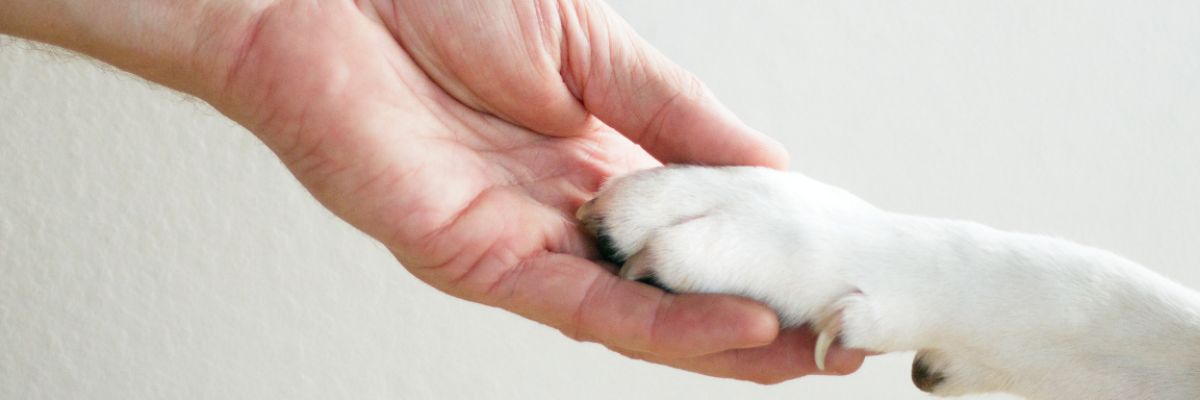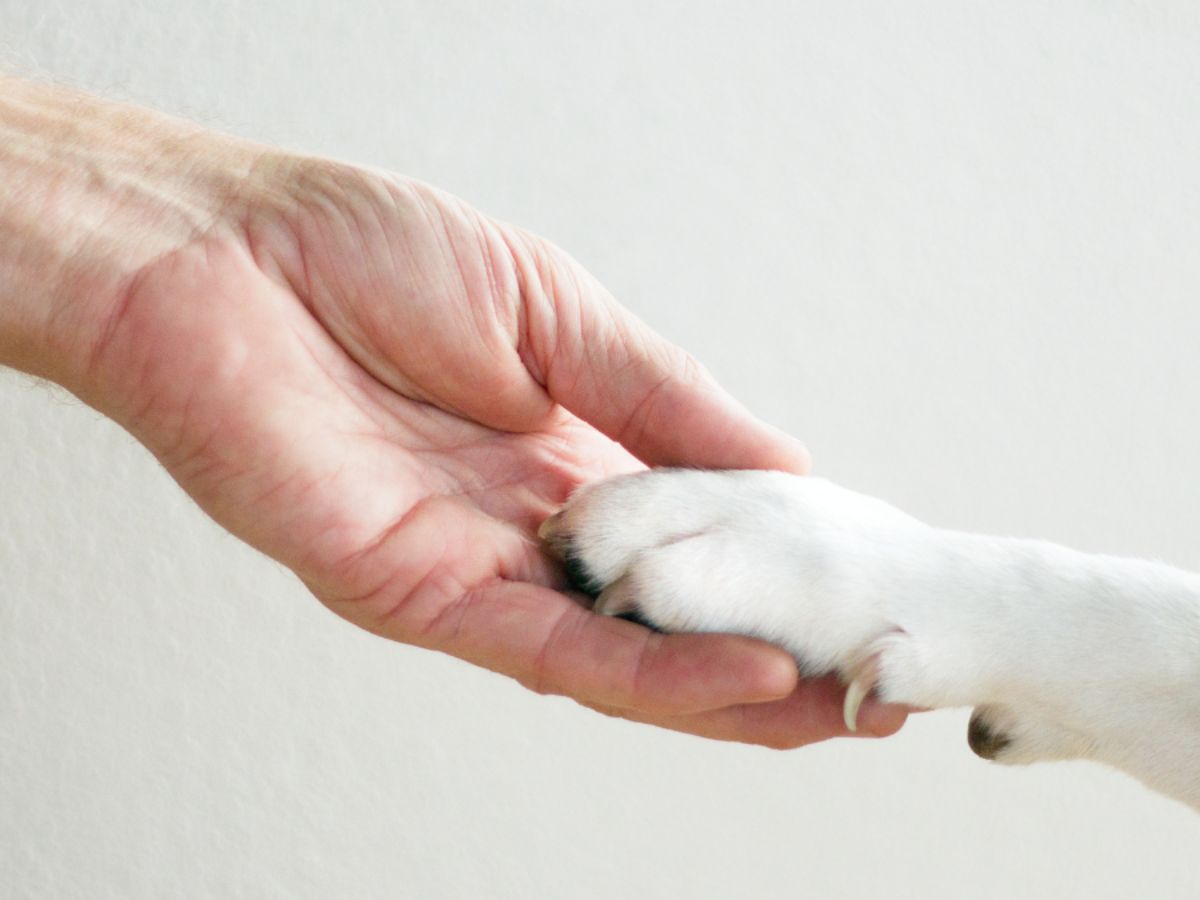
Euthanasia is one of the most difficult decisions any pet owner will face.
It is a deeply emotional choice, often accompanied by feelings of guilt, doubt, and grief. However, the primary motivation behind this decision is always love – the desire to relieve your beloved companion from suffering.
While, over time, you may find comfort in knowing you did the right thing, it is natural to struggle with conflicting emotions, including euthanasia remorse. You may question whether you acted too soon or too late. But in the end, choosing to end a pet’s suffering is an act of selflessness and compassion, one that requires us to endure our own pain in order to give them peace.
Is it better to wait for a natural passing at home?
Many pet owners hope for their pets to pass peacefully in their sleep, sparing them from making an unbearably difficult choice. While this can happen, it is rare. A natural passing, even in very ill pets, can take time and, unfortunately, may bring discomfort – including pain, dehydration, or breathing difficulties. Hospice care can sometimes help, but it isn’t always available. To safeguard your pet’s welfare and avoid unnecessary suffering, most vets recommend euthanasia as the kindest and most compassionate option.
When is the right time to put my pet to sleep?
Deciding when to say goodbye is one of the hardest choices you’ll ever make. While no moment will ever be perfect, waiting too long can lead to unnecessary suffering. The decision is deeply personal, but considering your pet’s quality of life can help guide you.
Key signs to consider:
- Pain or discomfort that cannot be managed
- Loss of appetite or refusal to eat
- Limited mobility or struggling to stand/walk
- Incontinence or loss of bladder/bowel control
- Mental confusion or signs of distress
- Difficulty breathing or persistent respiratory issues
Observing these changes over time can help you determine whether your pet is having more bad days than good. Consulting your vet, loved ones, or a pet bereavement counsellor can provide support and reassurance. In some cases, setting an endpoint, such as when your pet can no longer eat or breathe comfortably, can help ensure they don’t endure unnecessary pain. Above all, trust your instincts and remember that choosing to let go is an act of love and kindness.
How to prepare for putting your pet to sleep
Preparing yourself and understanding the process of euthanasia can help ease the distress and guilt that often accompany this difficult decision. When you’re informed and able to make decisions that align with your wishes, it can make the experience a little more peaceful and allow you to focus on what’s best for your beloved companion.
In some cases, euthanasia may need to happen quickly, with little time to prepare.
However, if there is time, there are a few key factors to consider:
- Euthanasia at Home vs. at the Veterinary Practice
- Many veterinary practices offer at-home euthanasia, which can be a more peaceful and private experience for both you and your pet. This is because it allows your pet to stay in a familiar environment, so the process may feel less stressful for them. However, there are also some potential downsides:
- The process can be more logistically complicated
- If complications arise (although rare), the vet may not have the resources to handle them as effectively as in a clinical setting
- The vet’s availability may be limited, meaning you might not have much flexibility in timing
For some people, performing euthanasia at home can make the experience more emotionally difficult, as the reminder of the event remains in the home.
If euthanasia happens at home, most veterinarians will arrange for your pet’s body to be taken for aftercare. Alternatively, if you choose to go to the practice, it may be comforting to bring your pet’s favourite blanket or bed with you.
Timing
Consider the time of day and day of the week when scheduling an appointment. You may want to choose a time when the clinic is less busy, so the appointment doesn’t feel rushed. You might also want to take some time to enjoy a final walk or meal with your pet before the procedure. If you feel you may need time off work to grieve, try to plan accordingly. If you feel you may need to take time off work to grieve, know that this is normal. You may want to plan ahead to ensure you have the time you need
For home euthanasia, timing may be more restricted based on the veterinarian’s schedule. You may also want to plan it for when children are not home, if that’s important to you.
When you arrive at the clinic, you may prefer to wait in the car with your pet and be called in when the vet is ready, which can allow for a smoother, less stressful transition.
Veterinary Staff
It can bring comfort to have the procedure performed by a veterinarian or nurse who has been involved in your pet’s care. Familiar faces can provide a sense of connection and reassurance during such a difficult time.
Above all, remember that euthanasia is intended to be a peaceful, quick, and pain-free process for your pet. By considering these factors, you can approach this final decision with a sense of comfort and peace, knowing you’ve made the best choice for your pet.

What happens when an animal is euthanised?
The process of euthanasia is designed to be as peaceful and pain-free as possible for your pet regardless of where it takes place. The procedure typically follows these steps:
- Comfort and Positioning: Your pet will be made as comfortable as possible, often lying on a soft bed. A nurse or assistant may help hold your pet, but if you are present, you can continue to comfort your pet with gentle strokes or words.
- Preparation: The veterinarian will clip a small area of fur on one of your pet’s front legs to access a blood vessel. An intravenous catheter (cannula) will be placed into the vein, and the veterinarian will flush saline through it to ensure it is working correctly.
- Euthanasia Solution: After the catheter is in place, the veterinarian will administer the euthanasia solution. This solution contains pentobarbital, a drug that was once used as a general anaesthetic. The overdose of this drug will cause your pet to become unconscious quickly and peacefully. Their muscles will relax, their breathing will stop, and finally, their heart will cease beating. The veterinarian will check for a heartbeat to confirm your pet has passed.
- Reflexes After Passing: It’s important to understand that after the heart stops, your pet’s body may release urine or stools, or they may gasp or twitch. These are natural reflexes. When animals pass, their eyes also typically remain open.
Once the euthanasia is complete, you may wish to spend a few moments alone with your pet. This time can be a gentle farewell, and some people choose to take a small memento, such as a tuft of fur or a pet tag, to remember your pet by.
Should I be present when my pet is put to sleep?
Choosing whether to be present during your pets euthanasia is deeply personal and emotional. Some people find comfort in being with their pet in their final moments, providing reassurance and love, while others may find it too difficult and prefer to say goodbye afterwards.
For many, being there can bring peace of mind, knowing they were with their pet who trusted them to the end. It can also prevent feelings of guilt or regret about not being present. However, if you feel that your own grief may distress your pet or if you’re unsure, it may be best to step back. Ultimately, the decision is yours.
Should my children witness the euthanasia?
Deciding whether children should be present depends on their age, maturity, and how they process grief. It’s a decision that is best made by parents, although your veterinarian can offer guidance. Some practices may discourage children from attending, so it’s wise to check ahead of time.
If you choose not to have children present, consider whether anyone else should accompany you for support. Having a trusted friend or family member with you can help you through the appointment and ensure you have someone to drive you home afterward.
What happens after my pet is euthanised?
After your pet has been euthanised, there are several aftercare options to consider. It’s a good idea to discuss these options with your veterinarian and family ahead of time, if possible, to make decisions when you’re not feeling emotionally overwhelmed.
Some pet owners choose to have their pet’s remains cremated or buried, while others may explore memorial options such as keepsakes or special rituals to honour their pet. The choice of aftercare depends on personal, spiritual, and practical factors. Some find comfort in having their pet’s physical remains, while others may not feel the need for this connection.
Whatever your decision, remember there is no right or wrong answer. What matters most is that you choose the option that feels best for you and your family. This final decision can be a meaningful way to preserve the bond you shared with your beloved companion.

